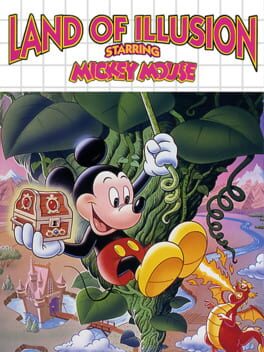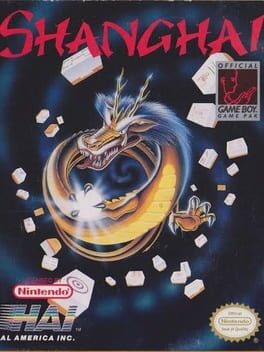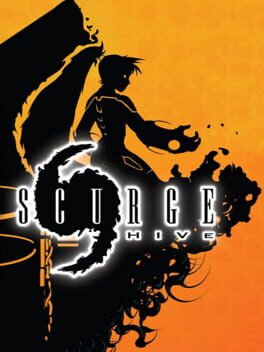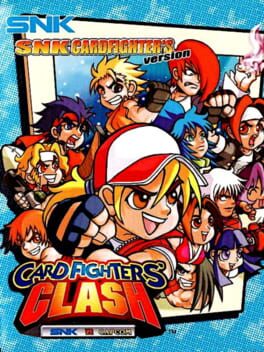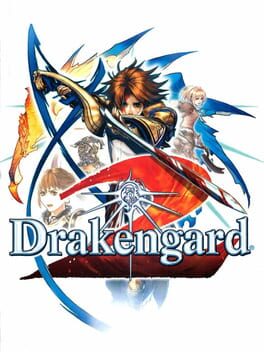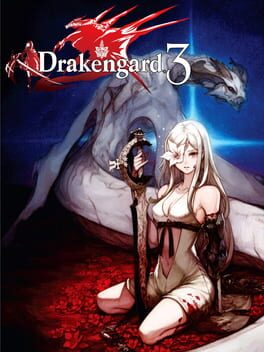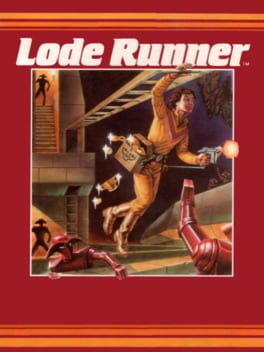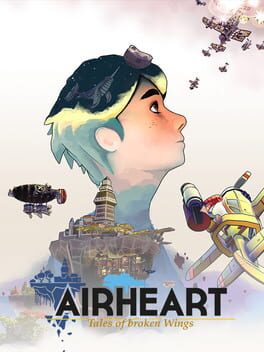1989
Alleyway, or アレイウェイ, was developed by Intelligent Systems and distributed by Nintendo itself, released back in 1989.
The game is a clone of the classic "Breakout", which I believe you all know and which is often found in minigame collections of 1000 games in 1. However, Alleyway, despite being a "clone", is very well designed and thought out.
The game doesn't have a story; you control Mario, yes, Mario, although it's actually a little ship that serves as a barrier for the ball that is used to destroy the blocks. The aim here is precisely that: to break all the blocks in each level.
Speaking of stages, that's where this game stands out. Despite not having power-ups like some more recent versions of Breakout clones, Alleyway doesn't become repetitive. This is due to the care taken to maintain variety and challenge in each stage. It has 24 normal stages and 8 bonus stages that only serve to accumulate points. In each of the 24 normal levels, there is a difference; some are ordinary, in others the blocks go down over time, some blocks move, your little ship can get smaller making it harder to control, some levels get faster over time, and so on. So the game never gets boring and always keeps the player engaged until the end.
This is a perfect game for a console like the Gameboy. It's practical and quick to pick up and play in small doses on a daily basis, just by taking the console out of the bag and playing a few levels.
And that's all I had to say about Alleyway, it's very good, even in its simplicity they've managed to balance everything very well.
My rating for it is: 3 stars.
The game is a clone of the classic "Breakout", which I believe you all know and which is often found in minigame collections of 1000 games in 1. However, Alleyway, despite being a "clone", is very well designed and thought out.
The game doesn't have a story; you control Mario, yes, Mario, although it's actually a little ship that serves as a barrier for the ball that is used to destroy the blocks. The aim here is precisely that: to break all the blocks in each level.
Speaking of stages, that's where this game stands out. Despite not having power-ups like some more recent versions of Breakout clones, Alleyway doesn't become repetitive. This is due to the care taken to maintain variety and challenge in each stage. It has 24 normal stages and 8 bonus stages that only serve to accumulate points. In each of the 24 normal levels, there is a difference; some are ordinary, in others the blocks go down over time, some blocks move, your little ship can get smaller making it harder to control, some levels get faster over time, and so on. So the game never gets boring and always keeps the player engaged until the end.
This is a perfect game for a console like the Gameboy. It's practical and quick to pick up and play in small doses on a daily basis, just by taking the console out of the bag and playing a few levels.
And that's all I had to say about Alleyway, it's very good, even in its simplicity they've managed to balance everything very well.
My rating for it is: 3 stars.
1989
Shanghai, or 上海, was created and distributed by HAL Laboratory in 1989. This game is part of a small series from Activision called Shanghai, which ran until 2011.
This game is a variation on the Chinese game, Mahjong, and although at first glance it looks complicated, it's actually quite simple. Basically, it's a slightly more elaborate "memory game". You have to match the 144 tiles with the same designs, but they are distributed in a specific way, with tiles overlapping each other. You can only match two pieces that have some empty adjacent space, and that's the whole challenge of the game. It involves a lot of luck in the distribution of the pieces, but more skill when it comes to deciding which pieces to take to make way for more later.
So, despite its simplicity, it's a game that requires a lot of planning and strategy, as well as luck.
The gameplay is very simple and there's no story, you just jump in and play a game until it's over. It has an "easy" mode for those who have difficulty finishing the board normally.
In short, it's an extremely simple game. Technically, the only thing I can mention is that the three songs the game features are nice, but depending on how long it takes you to finish a game, which is usually a long time, they can become repetitive. I myself played most of the time with the sound off because I couldn't stand the music any longer.
That said, my rating is: 2 stars.
This game is a variation on the Chinese game, Mahjong, and although at first glance it looks complicated, it's actually quite simple. Basically, it's a slightly more elaborate "memory game". You have to match the 144 tiles with the same designs, but they are distributed in a specific way, with tiles overlapping each other. You can only match two pieces that have some empty adjacent space, and that's the whole challenge of the game. It involves a lot of luck in the distribution of the pieces, but more skill when it comes to deciding which pieces to take to make way for more later.
So, despite its simplicity, it's a game that requires a lot of planning and strategy, as well as luck.
The gameplay is very simple and there's no story, you just jump in and play a game until it's over. It has an "easy" mode for those who have difficulty finishing the board normally.
In short, it's an extremely simple game. Technically, the only thing I can mention is that the three songs the game features are nice, but depending on how long it takes you to finish a game, which is usually a long time, they can become repetitive. I myself played most of the time with the sound off because I couldn't stand the music any longer.
That said, my rating is: 2 stars.
2006
2005
2013
2019
1983
1989
Hyper Lode Runner, or ハイパーロードランナー, is a "sequel", in quotes, to the classic "Lode Runner", developed by Tose Software and distributed by Bandai. Officially, it was the first game released for the big Gameboy in 1989, and, well, it's certainly a game that exists...
As I mentioned, this isn't the first game in this franchise; in fact, it's the tenth. The first Lode Runner was released six years earlier on all possible and imaginable platforms and, in turn, was a "clone" of the also classic Space Panic.
Despite being a classic, nowadays many people don't even know that Lode Runner exists, although the franchise still exists in a way, with almost 30 games, the latest of which was released in 2017.
But back to the topic of the video, what is Hyper Lode Runner about? As a classic game, it's quite simple. The story is basically non-existent, with just a simple premise: you control a space soldier who fights an army of aliens to take back the gold they stole from humanity.
The gameplay revolves around this; the objective in each stage is to pick up all the scattered piles of gold and then escape. You can't actually defeat the aliens, only create holes in the ground so that they fall in and don't catch you. You also have to use the holes to escape from them or reach other places.
The gameplay is quite simple and, both in this version and in the classic one, which I also played to see what it was like, it's complicated due to the technology of the time. Sometimes you don't have much precision to create the holes, and the game has some problems with the artificial intelligence, which sometimes goes crazy for no apparent reason.
However, there's no denying that the game is addictive. Even with these problems, it finds a very good point in its simplicity; you get stuck in the game for hours without realizing it, trying to find other ways to get through the levels, which is a positive point.
As for the levels, the game has 50 of them, with different layouts and even innovations in the gameplay cycle at times. On the whole, however, they end up being quite repetitive. One positive point is that you can also create your own levels. Unfortunately, however, you can't save them, which makes this feature somewhat redundant.
Essentially, that's all I had to say about Hyper Lode Runner. It's a simple game with a few problems and it gets repetitive quickly, but it's a classic for a reason; it knows how to hold your attention.
My rating for it is: 2 stars.
As I mentioned, this isn't the first game in this franchise; in fact, it's the tenth. The first Lode Runner was released six years earlier on all possible and imaginable platforms and, in turn, was a "clone" of the also classic Space Panic.
Despite being a classic, nowadays many people don't even know that Lode Runner exists, although the franchise still exists in a way, with almost 30 games, the latest of which was released in 2017.
But back to the topic of the video, what is Hyper Lode Runner about? As a classic game, it's quite simple. The story is basically non-existent, with just a simple premise: you control a space soldier who fights an army of aliens to take back the gold they stole from humanity.
The gameplay revolves around this; the objective in each stage is to pick up all the scattered piles of gold and then escape. You can't actually defeat the aliens, only create holes in the ground so that they fall in and don't catch you. You also have to use the holes to escape from them or reach other places.
The gameplay is quite simple and, both in this version and in the classic one, which I also played to see what it was like, it's complicated due to the technology of the time. Sometimes you don't have much precision to create the holes, and the game has some problems with the artificial intelligence, which sometimes goes crazy for no apparent reason.
However, there's no denying that the game is addictive. Even with these problems, it finds a very good point in its simplicity; you get stuck in the game for hours without realizing it, trying to find other ways to get through the levels, which is a positive point.
As for the levels, the game has 50 of them, with different layouts and even innovations in the gameplay cycle at times. On the whole, however, they end up being quite repetitive. One positive point is that you can also create your own levels. Unfortunately, however, you can't save them, which makes this feature somewhat redundant.
Essentially, that's all I had to say about Hyper Lode Runner. It's a simple game with a few problems and it gets repetitive quickly, but it's a classic for a reason; it knows how to hold your attention.
My rating for it is: 2 stars.
2009
2018
